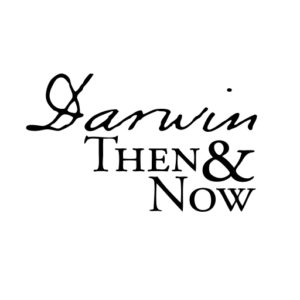 The historical timeline of the theory of evolution before and after Darwin gives context to contemporary theories.
The historical timeline of the theory of evolution before and after Darwin gives context to contemporary theories.
Early Theories
The origin of evolution is rooted in Greek philosophy. Anaximander of Miletus (610–546 BC) is the first credited with offering a detailed explanation for the first tenets of evolution; “life had evolved from moisture,” and “man developed from fish.” Aristotle (384–322 BC) took a different approach, arguing that we can only make sense of nature if it has a purpose since “nature does nothing in vain.” Western civilization academia remained under the influence of Aristotle.
Interestingly, Darwin challenged Aristotle’s purposeful view of nature, arguing –
“Aristotle, in his ‘Physicæ Auscultationes,’ after remarking that rain does not fall in order to make the corn grow, any more than it falls to spoil the farmer’s corn when threshed out of doors, applies the same argument to organization… We here see the principle of natural selection shadowed forth, but how little Aristotle fully comprehended the principle, is shown by his remarks on the formation of the teeth.”
Evolution “In The Air”
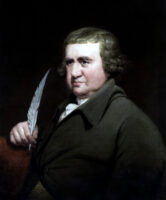 Greek philosophers introduced the theory of evolution into the emerging Western academic circles. Evolution was a popular topic in high society long before Darwin’s “Origin of Species.” Erasmus Darwin (pictured left), his grandfather, poetically speculated on the origins of life in his book “Zoonomia, or the Laws of Organic Life” (1794) –
Greek philosophers introduced the theory of evolution into the emerging Western academic circles. Evolution was a popular topic in high society long before Darwin’s “Origin of Species.” Erasmus Darwin (pictured left), his grandfather, poetically speculated on the origins of life in his book “Zoonomia, or the Laws of Organic Life” (1794) –
“Organic Life beneath the shoreless waves, Was born and nurs’d in Ocean’s pearly caves… These are successive generations bloom.”
In echoing Erasmus’ vision, the “Origin of Species “quickly gained dominance more than 50 years later in a crowded field of theories known as Darwinism.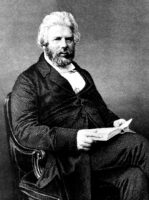
At the time, the interest in evolution reached a tipping point when Scottish geologist and geologist Robert Chambers (pictured right) published the best-seller “Vestiges of the Natural History of Creation” in 1845. Chambers brought together popular ideas of stellar evolution with the progressive transmutation of species theory, a logical Age of Enlightenment approach.
Prince Albert even read Vestiges aloud to Queen Victoria (pictured left) over several days in 1845. In the words of Darwin, the topic of evolution was sensationally “in the air.”
Darwin’s Natural Selection
 In echoing Erasmus’ vision, Darwin’s “Origin of Species “quickly gained dominance more than 50 years later in a crowded field of evolution theories known as Darwinism. Darwin’s first written material did not start until two years after returning on his five-year voyage on the H.M.S. Beagle in a notebook he labeled “B” (pictured left) front and back and dated “July 1837” on the inside of the front cover. “Zoonomia“ was the title of the first page.
In echoing Erasmus’ vision, Darwin’s “Origin of Species “quickly gained dominance more than 50 years later in a crowded field of evolution theories known as Darwinism. Darwin’s first written material did not start until two years after returning on his five-year voyage on the H.M.S. Beagle in a notebook he labeled “B” (pictured left) front and back and dated “July 1837” on the inside of the front cover. “Zoonomia“ was the title of the first page.
An introduction to natural selection, however, did not begin until the following year (1838) while reading the book entitled An Essay on the Principle of Population, written by Thomas Robert Malthus (pictured right), an English political economist. As Darwin explains in his Autobiography –
Thomas Robert Malthus (pictured right), an English political economist. As Darwin explains in his Autobiography –
“In October 1838 … I happened to read for amusement Malthus On Population… it at once struck me that under these circumstances favorable variations would tend to be preserved, and unfavorable ones to be destroyed. The result of this would be the formation of new species.”
Variations seen in the Galapagos Finches would eventually emerge to play a central role in Darwin’s theory using Malthus’ logical approach – not according to the principles of science and the scientific method. Darwin was caught between the principles of Enlightenment logic and the principles of science. Although every copy of the Origin of Species was sold within 24 hours, the scientific was mixed, then as now. The Royal Society never awarded Darwin a Royal Medal for any of his work following the Origin.
Early Challenges
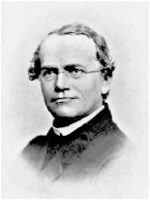 In the 1930s, neo-Darwinism began replacing Darwinism and was broadly embraced by the mid-century as the mechanism driving evolution. Also called the modern evolutionary synthesis theory, neo-Darwinism blended classical Darwinism with Gregor Mendel’s (pictured left) earlier discovery of genetics (1865), known as Mendelian genetics.
In the 1930s, neo-Darwinism began replacing Darwinism and was broadly embraced by the mid-century as the mechanism driving evolution. Also called the modern evolutionary synthesis theory, neo-Darwinism blended classical Darwinism with Gregor Mendel’s (pictured left) earlier discovery of genetics (1865), known as Mendelian genetics.
The molecular foundation of this theory was driven by the “central dogma of molecular biology,” advanced by the co-discoverer of the DNA molecule, Francis Crick, stating –
“The central dogma of molecular biology deals with the detailed residue-by-residue transfer of sequential information. It states that such information cannot be transferred back from protein to either protein or nucleic acid.”
By the mid-late century, however, the emergence of the Genomic Revolution significantly challenged Frick’s central dogma giving rise to abstract gene-centric views of evolution, including Richard Dawkin’s selfish gene theory. And the Punctuated Equilibrium theory (advocated by Stephen J Gould and Niles Eldredge) emerged to update Darwin’s theory to account for the sudden appearance of species in the fossil record – a conclusion incompatible with Darwin’s theory.
Twenty-First Century Challenges
By the early twenty-first century, as advances in biotechnologies continued to discover nature’s unsuspected molecular secrets, revisions to the modern synthesis theory became increasingly inescapable. The new theories included Epigenetics, Evolutionary Development Biology (Evo-Devo), and Extended Evolutionary Synthesis (EES) to address the scientific problems of neo-Darwinism conceptualized by Massimo Pigliucci (pictured right) and Gerd B. Müller.
Over the past two decades, national and international evolution scientists have convened numerous times to develop a new scientific consensus on the laws of nature driving evolution. However, while these efforts have failed to produce a new revision, developing a scientific consensus on evolution’s natural laws must be the evolution industry’s ultimate goal – if the theory is a viable “scientific fact.”
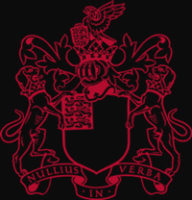 To break the seeming deadlock for revising the evolution theory, in 2017 The Royal Society embarked on a new initiative focusing only on identifying a natural mechanism to account for the origin of life. Named Evolution 2.0, the initiative offers a $10 million prize. Specifically, the winner must answer life’s most fundamental question – “what is the origin of the first cell’s information?” As Clive Cookson, Financial Times science editor, explains –
To break the seeming deadlock for revising the evolution theory, in 2017 The Royal Society embarked on a new initiative focusing only on identifying a natural mechanism to account for the origin of life. Named Evolution 2.0, the initiative offers a $10 million prize. Specifically, the winner must answer life’s most fundamental question – “what is the origin of the first cell’s information?” As Clive Cookson, Financial Times science editor, explains –
“Evolution 2.0 is a sign of a shifting emphasis in biology from regarding life primarily as a chemical system to looking at the flow of information.”
The Society has yet to award a winner.
More importantly, no scientific organization developed a consensus on the scientific validity of evolution. While many science organizations have issued a consensus for teaching biological evolution, our legal system mandates teaching evolution while banning critical thinking that challenges evolution orthodoxy.
Darwin Then and Now is an educational resource on the intersection of evolution and science and the challenges facing the theory of evolution.
Links
- The Home page features evidence-based investigative articles
- The Glossary defines terms associated with the theory of biological evolution.
- Understanding Evolution gives insights into how different investigative approaches to examine evolution can lead to diverse conclusions.
- Studying Evolution gives insights into the terms species and natural selection and how they have changed since The Origin of Species was published in 1859.
- What is Science gives insight into Charles Darwin’s approach to science and how the principles of modern science are used for different investigative purposes.

